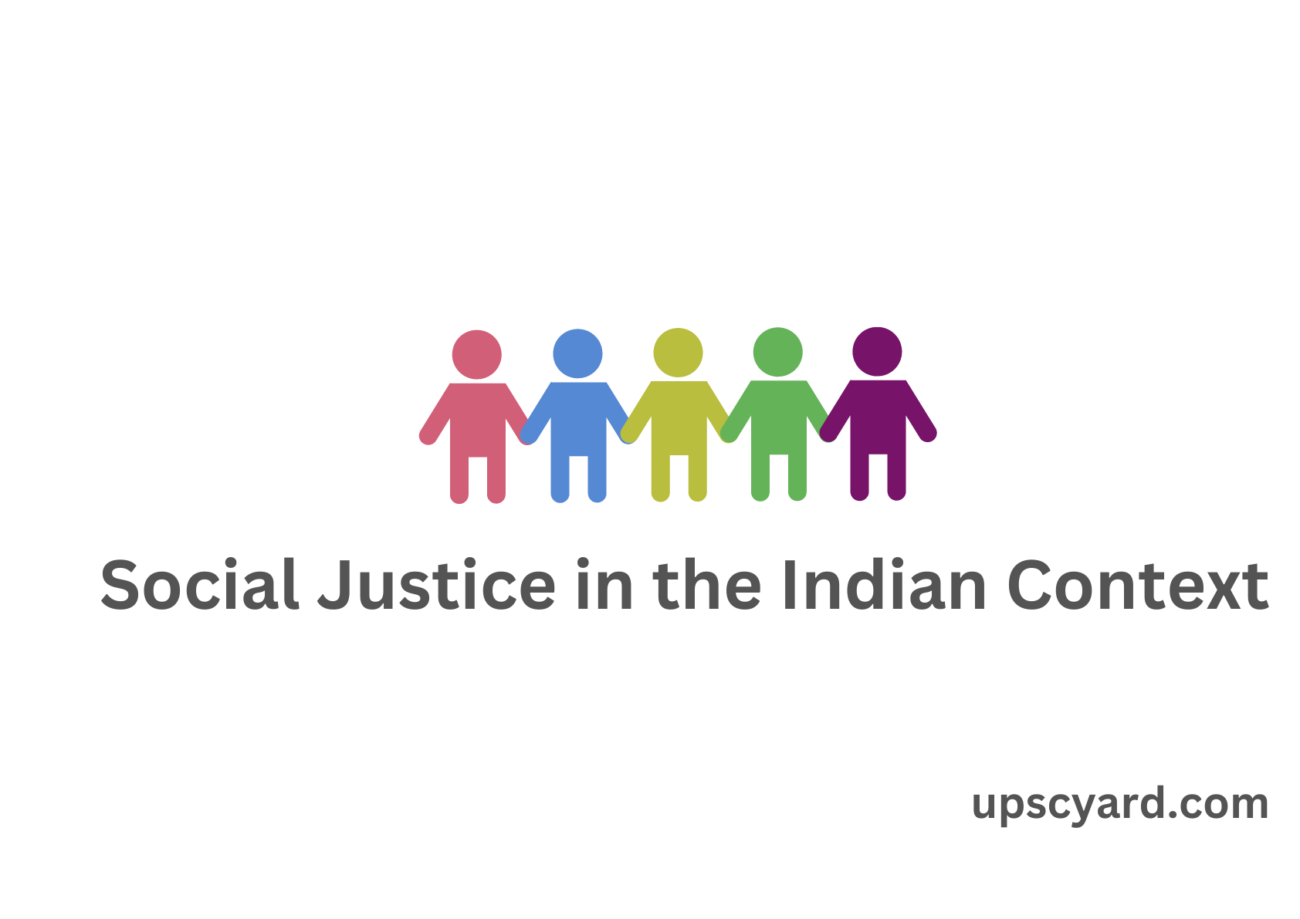Social Justice in the Indian Context
Social Justice
Social justice is a comprehensive concept encompassing the fair distribution of both material and moral advantages within a society. It represents a progressive ideology and a model for development.
The Indian Constitution, particularly in its Preamble and the section on Directive Principles of State Policy, promises to uphold social, economic, and political justice. In everyday language, “social justice” is commonly used to refer to the pursuit of justice in all three dimensions – social, economic, and political.
It also entails reshaping societal structures to ensure that the benefits of collective efforts are not concentrated among a privileged few but extend to the masses, uplifting marginalized sections of society and fostering collective solidarity.
A. Liberal Approach
The concept of social justice is multifaceted, with different perspectives such as the liberal model, which emphasizes social mobility and flexible inequalities. D.N. MacCormic and R.A. Pinker stress the importance of equality and the criteria for just or unjust inequality. John Rawls’s liberal-egalitarian justice goes beyond individualism and prioritizes the welfare of all members of society, especially the least advantaged. He advocates for the equal distribution of social primary goods, unless unequal distribution benefits the least favored. Ambedkar also contributed to the idea of social justice, envisioning it through the extension of political democracy to the social and economic spheres, similar to Rawls’s principle of special treatment in his theory of distributive justice.
B. Feminist Approach
Feminist criticism of justice centers on the unjust disparities experienced by women due to societal norms and male dominance. Feminist theory and activism emphasize the need to challenge and change the status of women as subordinate and oppressed. They advocate for the elimination of male domination, equal rights, and a transformation of societal, cultural, and political structures to be non-patriarchal. The goal is to empower women in all aspects of life, including health, education, economic opportunities, and political participation. The feminist perspective on justice aims to create a more equitable and inclusive society.
C. Socialist Approach
The socialist concept of justice is rooted in collectivism and a strong commitment to social equality. Socialists focus on addressing injustices faced by workers, peasants, and the underprivileged within society, particularly in capitalist systems. They believe that true justice can only be achieved in a classless society. Democratic socialists, on the other hand, seek both socialist and democratic principles, aiming for a just society that ensures democratic rights, civil liberties, and socio-economic rights for all citizens. Achieving such an ideal scheme would be a significant step towards social justice.
D. Subaltern Approach
The subaltern approach focuses on groups in society that have been relegated to subordinate positions due to factors such as gender, age, class, caste, race, religion, language, and culture. These marginalized and oppressed groups seek social justice, advocating for the elimination of discrimination and the attainment of social equality. The subaltern perspective recognizes that justice goes beyond economic concerns, encompassing social, cultural, educational, and psychological aspects as well.
Essay Topic – 2020 UPSC Mains Question Paper
“Patriarchy is the least noticed yet the most significant structure of social inequality” 1000-1200 words.
Consider this first before writing





